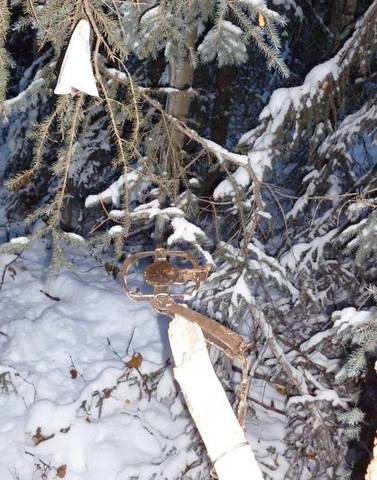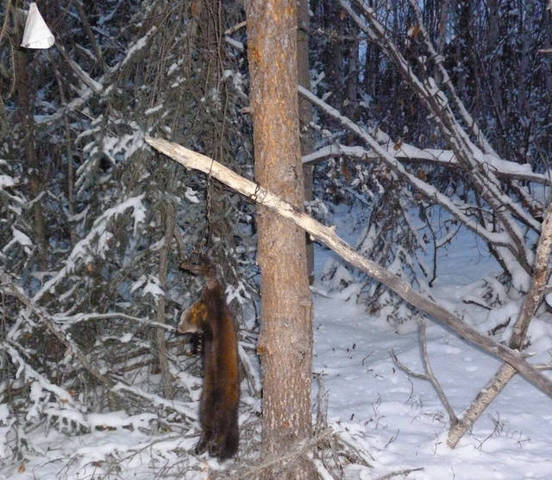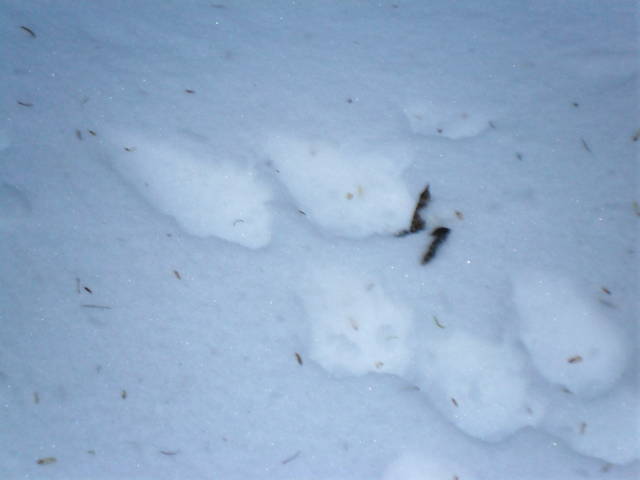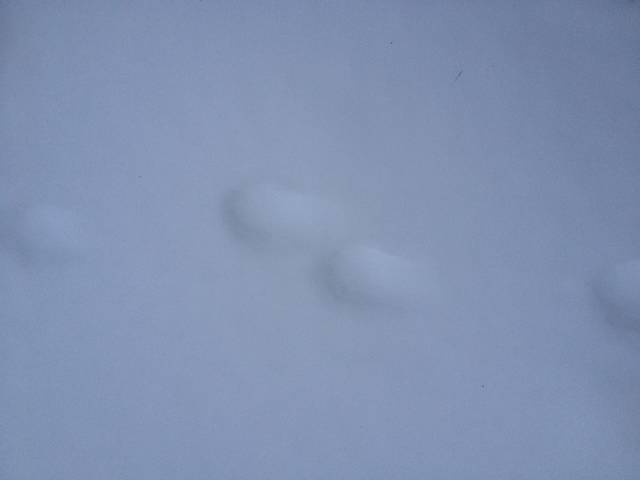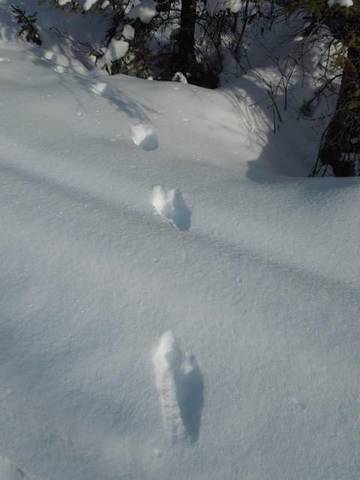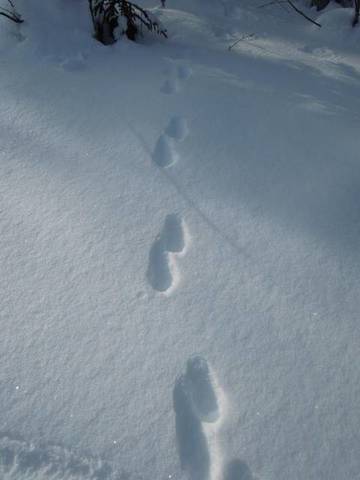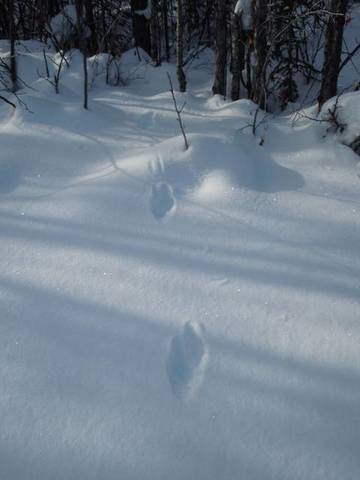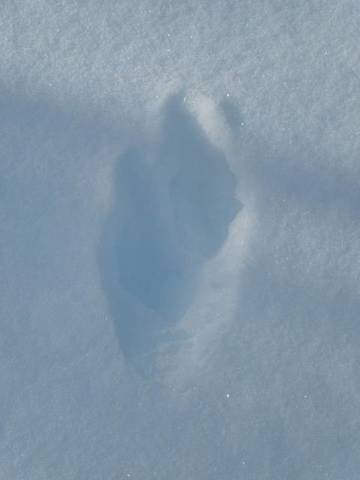BD,
Here's how I do my pole sets, when I use them, (mainly in DEEP snow sections of my line.) EVERYBODY does it different, so I'm just saying this is the method I use. I cut my pole to a wedge shape by chopping it on opposite sides. A longspring slips right over the wedge, leaving the trap jaws and pan hanging over space. This is the LAST thing for the marten to step on, when reaching out for the bait. You'll catch most of them by the left front foot, when set this way. Having the trap hanging out in space, allows snow to fall through the jaws, and not build up as badly on the trap, vs. having the trap sitting on the pole. Also, wind, or a chinook will clear traps pretty rapidly, and get them back working again, at times.
Notice my bait is hidden, this pic, it's in one of those disposable paper funnels, but usually I have it inside an old soup can. This keeps many non targets like birds or pine squirrels from working the set as much. I loop the chain back through the ring, slip that over the pole, then wire the trap chain to the pole as short as possible, usually 3 or 4 links. Longer poles keep marten out away from the tree, so as not to get pitch on the fur. Also, use dead dry poles, or non spruce, to avoid pitch seeping on the poles, and getting onto fur. I like nice sheltered, mid- sized to smallish trees, with good overhead cover to keep the snow off, and hide caught marten from the ravens and such. I can take some better pics of some of my pole sets, later in the week, if you want, but you probably get what I'm saying?? Also, I wouldn't use bigger than a #1, and good strong #0's are ideal, but don't handle my deep snow so well, so I use mostly #1's. Maybe try hiking inland a bit, up a river, or small valley, if still no marten show in your sets. In this warm, and later in the season like this, they'll move inland, uphill, and up the valleys more. Good luck, and PM me if you have any ?'s I may be of help with.
